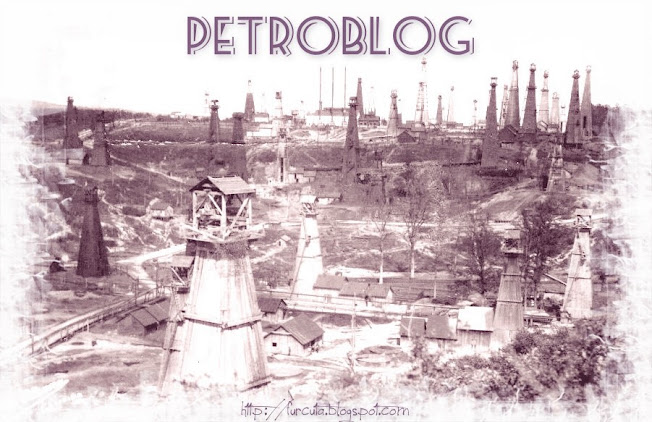Oil wells destroyed.
The development here commenced in.the year 1904, on the right bank of the River Cricov, at the places known as Stavropoleos and Tuicani, where excellent results were obtained . Wells at the shallow depth of 250 metres yielded 200 tons daily by bailing.At 430 metres larger sources were encountered and flowing wells were brought in,yielding from 300 to 700 tons daily . At 600 metres an even more prolific sand was struck and one particular, well known as the " Colombia," produced from this spurce 400,000 tons . A large number of other wells produced over 100,000 tons, and were still producing from the 600 metre sand when they were destroyed during the Romanian army's withdrawal in 1916 . Deeper sources were also reached at 800 metres and these were in the course of development in 1917 . Difficulty was anticipated in rendering useless flowing wells . One of the strongest flowing wells, belonging to the Romano-Americana Company. at Moreni. was so completely plugged that the flowing oil burst up between the casing and appeared oozing through the earths surface at various points surrounding the wellhead where it was ignited . It is believed that the oil will, block itself and cease from this ooze. In 1910 the eastern side of the River Cricov, which intersects the oilfield, was also developed and rich oilsands were met with at 300 metres yielding from 20 to 30,000 tons: of oil per well . This source became exhausted and, in 1913, a new sand was discovered at 760 metres yielding a flowing production of from 300 to 600 tons per day . The Moreni field consisted in 1916 of 112 producing wells and 72 drilling, wells with a daily production of 1,650 tons owned by 19 companies and private owners . Since Roumanian entry into the war, however, the production fell considerably owing to lack of material and labour . On the morning of te 28th November 1916,two masses of floating oil caught fire on the river (each about 600 yards in length) and were drifting down towards the two main wooden bridges over the Cricov river, on which the army relied for the passage of their men and guns from Dambovita to Prahova . The 29th of November was spent in completing the preparations for firing Moreni . Large gangs of men were employed with sledge hammers and other tools demolishing every conceivable piece of machinery, and even the breakable spares in the central stores. The wells were again visited and further plugging was carried on . On the evening of the 30th November it was obvious that the Roumanian Government Cornmission were still bent on blocking tactics and intended to postpone the actual firing,and it was here that the small British staff commence the firing of the derricks and their adjoining machine houses.
The destruction of Moreni oilfield.
The greater work of firing the oil reservoirs, store houses, power plants, workshops,gas and water installations, casting furnaces, and other plant necessary to a big industry commenced the next day. Several large explosions which resulted left the field clear of the native human element . The trails of straw saturated with oil and laid for the purpose of communicating fires were found to have been rendered ineffective through a heavy storm . It was here that the greatest fire risks were encountered . The quantity of oil burnt in this district was 42,000 tons.


